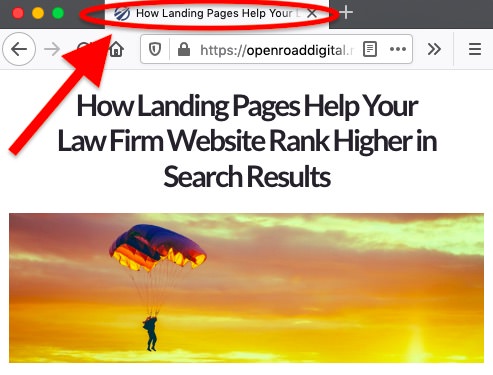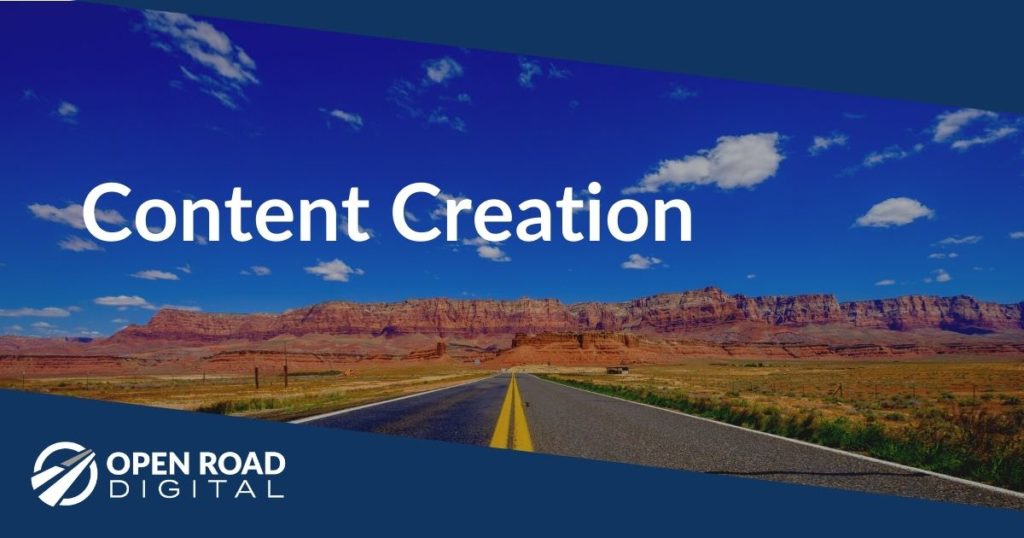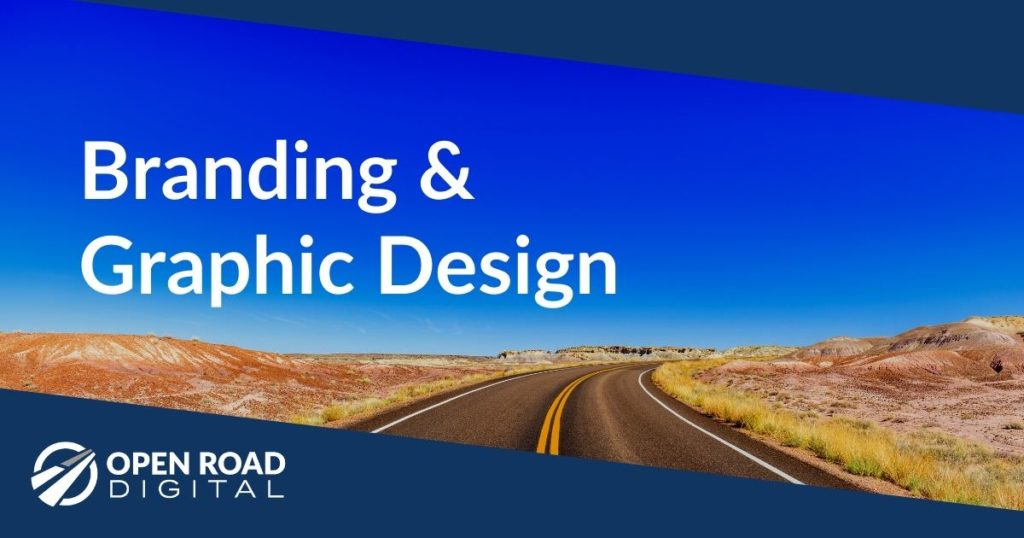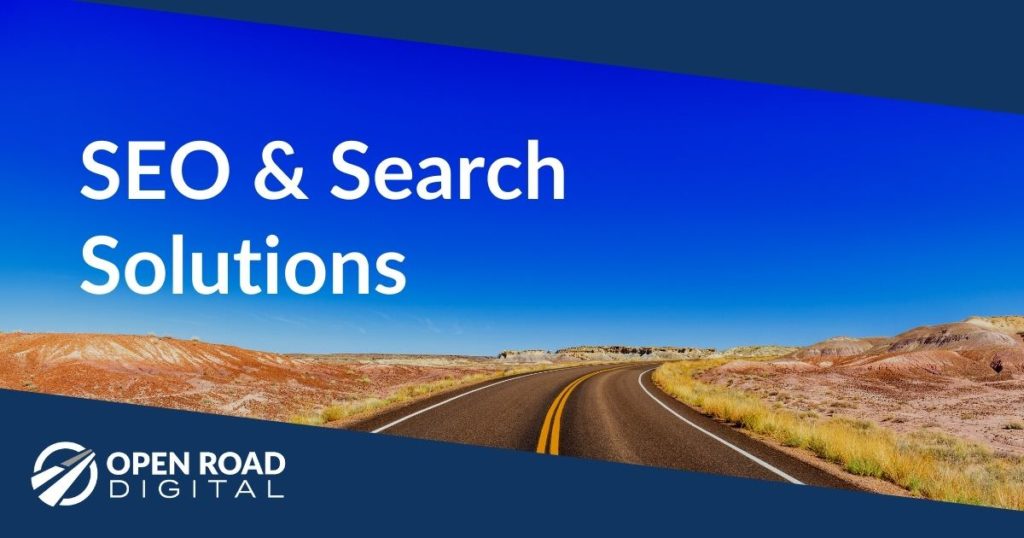So you’ve published a blog post – yet again – and wonder why you’re not seeing tangible results from it? It might be time to think about your digital marketing in terms of Landing Pages.
Technically speaking, any page on your website is a landing page, because it is where a visitor to your website “lands” and begins to learn about your expertise and experience. Landing pages that raise your profile, entice newcomers to contact you, and bring in clients require strategic thinking and action. But, the effort is worth the effort for law firms and other organizations who value the quality of the prospective clients they need.
A landing page can be a practice page, your bio, or a topical web page that groups your thought leadership content together. What are the characteristics of a landing page? Landing pages:
- focus on a particular niche
- provide a concentration of “niche” information that is valuable to both humans visiting your site and search engines
- confirm in the readers’ eyes that you are an expert in a particular topical area, and
- encourage visitors to your website to take further action, rather than simply leaving your site.
Oh, and landing pages help with SEO (search engine optimization), which is simply a series of practices you implement to help your pages rank higher in online search results.
Rank Higher with Landing Pages
When Google ranks web pages for certain topics, the initial ranking factor or signal they use is on-page content. Think about it, if your website doesn’t state anything about “Widgets,” then how would Google or Bing know that you work in Widgets? The content must exist on your website. That’s the starting point.
The more focused and robust the content is, the better. Not: Environmental Lawyers. Instead: Clear Air Act Lawyers for Factories. In your own niche, you know the law. But you also need to express who you serve, and perhaps where, or at what price point. Anything that defines your niche is good – that’s your strategic position.
Structuring content on a landing page involves a few guidelines:
- Match your page’s Title to your area of expertise and target audience. Where is your page Title? That’s what appears in a browser tab when you visit a web page. Remember: that page Title is generally what is displayed when the page appears in online search results.
- Make sure your keywords (phrases that your prospects search) are in the title, subtitles, and beginning paragraphs of your landing page. Internally in your firm you might call the topic “Widget Law,” but your prospective clients may be searching for phrases like “regulatory compliance plans for widget manufacturing.” They care about a topic in their own terms, and your keywords must reflect their terms, not yours.
- Use lists, both numbered and bulleted, to help structure the content. The Googlebot that crawls your website likes lists. (Notice that I’m giving you these tips in a bulleted list?)
- Embrace length: a landing page is the place where you should express and exhaust your knowledge about a subject. This is not a time to be verbose, but to be thorough. If you are thorough, why should a site visitor leave your site?
- Guide the reader (and the Googlebot that crawls your website) through the page with numerous section sub-titles. No one has time for long paragraphs anymore.
- Images are great, but be sure to tag them with alt text. Alt text is metadata that is easily “attached” to an image. It helps those with visual impairment to know what is on the web page, and it also tells Google what the image is, since the Googlebot can’t “read” images. Unless you tag your images with alt text metadata, search engines like Bing and Google have no idea if the image is of a puppy or an amicus brief. Metadata like this is also effective on social media.
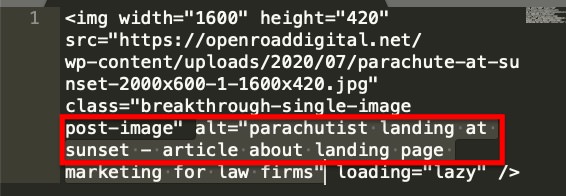
- Link all your existing (and future) blog posts about your niche topic from your landing page. By doing this, you are creating what is called an “SEO Topic Cluster” – a concentration of information about your niche. Your landing page is now a hub of information to other pages.
Humans Love Landing Pages
In general, high bounce rates are bad. What is a bounce? It’s when someone enters your website and leaves after reading that page. The bounce rate is simply the percentage of visitors who leave your website after visiting the page.
The point here is that you want visitors to visit many pages of your site – to explore. Landing pages are the entrance to an experience. When they visit your landing page, they should then click on further links to learn more about the topic, including blog posts, news items, FAQs, and related attorney bios.
I have a motto: “On the web, no one reads anything. They just look at stuff.” So, encourage site visitors to “look at your stuff” by using subheads, bulleted and numbered lists, and visuals. If you do, you increase the likelihood that visitors will actually read the content.
Landing Pages Encourage Your Site’s Visitors to Take Action
Using a website as a static “digital brochure” is fine – there’s nothing wrong with that. But with the tools available on web platforms, we want visitors to take action. These are called CTAs: Calls to Action. By creating enticing Calls to Action on your landing page, you are keeping visitors on your website, and thereby lowering your bounce rate. Sounds good, right?
A CTA can be anything you need it to be. For example, are you offering links to more content to help your readers understand your topic better? Think about how those links are offered to readers. For example, a short bullet list with each bullet item containing a link to a new page. Or, links embedded in thumbnail images that offer up case studies about how you successfully served other clients.
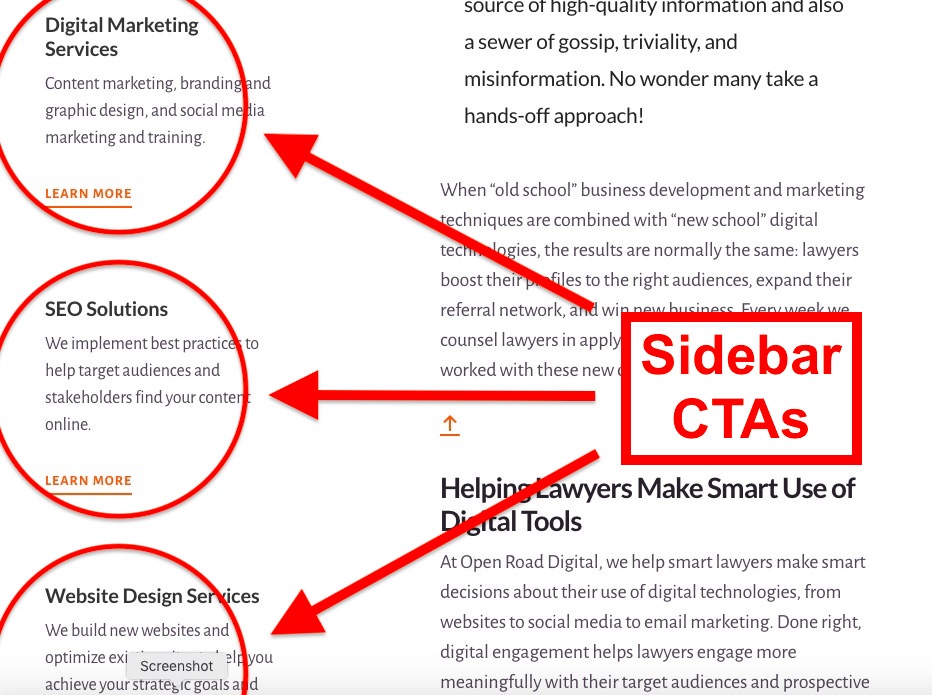
Buttons are friendly, inviting, and actionable CTAs. A button that leads to a case study, or a newsletter signup, or a white paper is easy for visitors to navigate and boosts the impression that you know what you are talking about.
A Call to Action can also be a mini bio at the bottom of your landing page. Mini bios can feature photos of one or two representative attorneys, a brief bio, contact information – all of which are linked to the attorneys’ full bios elsewhere on the website. If they’ve clicked your bio, then they are showing more interest.
Which leads us to …
Get to Know Your Audience and Prospects Better Through Analytics
Since landing pages are more of an “experience” than a typical web page, they are a good place to gain additional knowledge about people who visit your website. Think about it: if people are clicking and reading content via my landing page, we can (anonymously) track that data and learn something about our niche topic, our prospective clients, and our own expression of our law practice.
When you first create your landing page, it’s just a start. By reviewing your website’s analytics, you can assess user behavior can help you improve the website experience. One of the easiest ways to do this is by using Google Analytics, a free program.
For example, compare the Time on Page for your landing page to other pages on your website. Because you are creating an experience, with lots of linked content (for example, related blog posts), you should expect a visitor’s time spent on that page to rise.
Consequently, as time goes on, your landing page’s bounce rate should be lower than most pages on your website. That shows that your content is having a positive effect.
In Google Analytics, you also can set up “goals” – preset rules that enable the program to measure the behavior of visitors. For example, with Goals, you can track how many people entered your landing page and then clicked on various links on the page, such as links to Topic A, Topic B, and Topic C. This is invaluable data, because it helps you understand the concerns and interests of your audience. Is Topic B more popular than the others? Then Topic B may be where you want to spend more time in content marketing and business development.
Goals can also be set for time periods, such as determining the number of visitors who spent more than two, three, or five minutes on your page.
A landing page, then, is a richer form of web content that enables you to fully express your thought leadership and your experience, rank higher in Google search results, and understand your target audience. And by enabling Calls To Action, your content entices people to learn more about you and reach out to you – the opposite of those blog posts that seem to have little impact.


